Taking Down A Tree In 30 Seconds | Source
Taking down a tree in 30 seconds | source
More Posts from Green-notebooks and Others
What do you think of vertical axis wind turbines? Seems to me they'd complement small domestic PV installations nicely and could use some wider usage
I’ve heard some people get quite preachy about vertical axis wind turbines being no good, but personally I’m rather fond of them. I definitely agree that for domestic use, they make more sense than regular windmills. They’re also much better suited to urban environments.
The typical style of wind turbines are great when you have lamellar flowing air currents, like near the coast or on flat plains, but city wind is more gusty and turbulent. Vertical axis turbines definitely seem ideal for that!
I think some of the reservations people have stem from the fact that, in the past, vertical axis wind turbines have typically been less reliable, and the turbine blades are more prone to fatigue. Though using modern engineering materials and turbine designs, I’m not convinced those old problems still apply.
Some designs for small scale applications are also impressively discreet and quiet – though seemingly rather expensive!

FTA: “Kenya installs the first solar plant that transforms ocean water into drinking water, and it could be the solution to the global lack of water
The Earth is a watery place. In fact, 71 percent of our planet is covered in water [1]. Despite this, one in nine people do not have access to safe drinking water – that’s around 785 million people [2].
The trouble is, 96.5 percent of all Earth’s water is found in the oceans in the form of saline water, and is not drinkable for humans. That only leaves us with rivers, lakes, and groundwater to satisfy our water needs [1].
According to the World Economic Forum, the global water crisis ranks as the number four risk in terms of impact on society [3]. Let’s face it – humans need water to survive.
If you’re reading this from Canada or the United States, you may not understand this crisis on a personal level. After all, you can turn on a tap and have safe drinking water instantly start flowing from the faucet. This, however, is not the case for billions of people living on other continents. One NGO (Non-Government Organization) is trying to change that.
GivePower
Give Power’s mission is to install solar energy technologies that will bring essential services to developing communities in need [4]. Their most recent break-through project installed a solar-powered desalination system to bring clean, healthy water to the people in Kiunga, a rural village in Kenya [4].
With this technology, the salty ocean water will now be a viable source of water for the people living in this village. The system is capable of producing about 70 thousand litres or drinkable water every day, which is enough for up to 35 thousand people [4].”
GivePower
Do note that they are not yet rated on Charity Navigator

“Is it possible to turn things around by 2050? The answer is absolutely yes,” says Kai Chan, a professor at the Institute for Resources, Environment and Sustainability at the University of British Columbia.
Many scientists have been telling us how the world will look like, if we don’t act now. However, others, like Chan, are tracking what success might look like.
They are not simply day-dreamers either. They aren’t being too optimistic. They are putting together road maps for how to safely get to the planet envisioned in the 2015 Paris Agreement, where temperatures hold at 1.5 degrees Celsius higher than before we started burning fossil fuels, this article from July states.
“Three decades is enough to do a lot of important things. In the next few years—if we get started on them—they will pay dividends in the coming decades,” says Chan, the lead author of the chapter on achieving a sustainable future in a recent UN report that predicted the possible extinction of a million species.
Making these changes won’t mean years of being poor, cold and hungry before things get comfortable again, the scientists insist. They say that if we start acting seriously NOW, we stand a decent chance of transforming society without huge disruption.
No doubt, it will take a massive switch in society’s energy use. But without us noticing, that’s already happening. Not fast enough, maybe, but it is. Solar panels and offshore wind power plummet in price. Iceland and Paraguay have stripped the carbon from their grids, according to a new energy outlook report from Bloomberg. Europe is on track to be 90 per cent carbon-free by 2040. And Ottawa says that Canada is already at 81 per cent, thanks to hydro, nuclear, wind and solar.
Decarbonizing the whole economy is within grasp. We can do this.
“If we have five years of really sustained efforts, making sure we reorient our businesses and our governments toward sustainability, then from that point on, this transition will seem quite seamless. Because it will just be this gradual reshaping of options,” Chan says, adding: “All these things seem very natural when the system is changing around you.”
3-D printed bionic skin. It’s not science fiction.
follow @the-future-now
Can't afford to buy things for your garden?
*Re-posting, with new information
A store-bought bag of topsoil, a roll of landscaping fabric, or a bag of cedar chips doesn’t go very far if you have a large garden or a very limited budget. Here are some ways to create the materials you need for a beautiful, organic, productive garden, by both re-directing household waste, and foraging in your local area. I use a lot of these tricks in my garden to make it almost completely free for me to continue growing new things, and expanding the workable area every year!
For soil
Save your food scraps to create a rich compost for growing veggies and amending your soil. There are numerous options for every size of dwelling and yard. Small space solutions such as Bokashi and vermicompost work indoors and don’t produce bad smells, so you can keep them underneath the sink.Worm towers, compost heaps, and outdoor compost bins are a great solution if you have more space. The more you add, the more rich, nutritious material you can make for your garden. I like composting because it means I don’t have gross smelly garbage bags to deal with, because food waste is diverted. It seems like a lot of work at first, but it actually saves time, money, and transportation.
Seaweed or kelp is one of the best things for your garden, with over 70 essential nutrients, and acting as a weed barrier and a moisture-retentive mulch. I collect seaweed nearby on the beach with my bike trailer, or, when I go for a walk I bring a little home with me each time. It’s an absolute miracle for your soil.

Worm tower
Fertiliser
There are three things that are essential for plant growth. These are nitrogen for leaves and vegetation (N), phosphorus for roots and shoots (P), and potassium for water movement, flowering, and fruiting (K). Commercial fertilisers will give the relative concentrations of each of these compounds with and “NPK” rating. Plants like tomatoes also need calcium to produce healthy fruit. You can create amendments for your garden and soil at home so that you do not have to purchase fertiliser.
For nitrogen
Grass clippings contain 4% nitrogen, 1% phosphorus, and 2% potassium (NPK = 4-1-2).
Human urine contains 12% nitrogen, and it’s sterile. Dilute before adding directly to plants.
Legumes such as beans, clover, peanuts, and alfalfa fix inorganic nitrogen into the soil with mycorrhizal organisms and nodules on their root systems. Plant these crops every few years in rotation with others to renew the soil organically.
For phosphorus
Human urine is also a great source of phosphorous and trace amounts of potassium.
Ground up bones or shells add a slow-release phosphorous to the soil
Had a baby recently? Bury the placenta in the garden.
For potassium
Hardwood ashes
Composted banana peels
For calcium
Break down all of your eggshells, or seashells you have found, in a plastic bucket, using vinegar. This creates a soluble calcium solution you can add to a watering can.
Soil Acidity/Alkalinity
Many plants are particular about what the soil pH should be.
To make soil more acidic: add oak leaves, pine needles, leaf mulch, urine, coffee grounds or sphagnum.
To make soil more alkaline: add wood ash, shell, or bone.
Mulch
Mulch is decomposing organic matter that adds nutrition to the soil, while simultaneously keeping out weed growth and retaining moisture. It also attracts worms, fungi and other beneficial creatures to your soil. Free sources of mulch include:
Leaves
Garden waste
Grass clippings
Straw (often straw bales are given away after being used for decoration in the fall. You can also plant vegetables directly in straw bales using a technique called straw bale gardening).
Wood chips (if you can borrow a wood chipper after you’ve collected some wood you can have attractive wood mulch for free)

Straw bale garden
Landscaping fabric
When mulch isn’t enough to keep the weeds down, many people opt for landscaping fabric. It can be quite expensive and inorganic-looking. Free solutions that both attract worms and can be replaced in small segments as they break down include:
Newspaper*
Cardboard*
Egg cartons*
Printer paper, looseleaf, etc. in thick layers*
*try to make sure you are using paper that has vegetable-based dyes, so you aren’t leeching toxins into the soil.
Soil density/drainage
If your soil is compacted and you have plants that require low levels of water, or excellent drainage, add sand. I don’t recommend stealing it from the beach, but ask around and you’d be surprised at how easy it is to get for free. Sawdust also improves drainage. Adding organic matter and mulch encourages worms, who also till and aerate compacted soil.
If the area still needs drainage, dig a hole and fill it with bricks or rocks to create a “dry well”
For drainage in pots, add crushed bricks, terra cotta pot fragments, packing peanuts, small stones, marbles, orsand to the bottom under the soil layer. I find these in construction sites, on craigslist, or at flea markets.
Pots and growing containers
If you have space, raised beds are a great no-dig way to establish growing space. If you are pressed for space (like working on a balcony) there are many cheap or free options for container gardens.
Creating raised beds allows you to build up the soil without digging. Free ways to do this include using rocks or lumber (like my DIY “lasagna garden” made with the sheet composting technique), using the “wattle“ method with sticks and posts you have found, using discarded straw bales, old bricks,paving stones, cinder blocks or really anything else you have lying around.
Hugelkutur raised beds, which fix carbon and provide drainage, can be made by stacking sticks and untreated wood, and then piling soil or compost over it. (Thanks milos-garden)
Rubber tire gardens retain heat in the night and allow for great drainage. They can also be painted in fun ways.
Herb spirals (here is mine: 1, 2, 3) can be built with stones, bricks, and other found materials.
I often use old cooking pots, barbecues, teapots, or other found objects as planters.
Making wooden planters is easy, and scrap or salvaged wood is also easy to come by. I’m not a fan of using wooden pallets for DIY projects, but they are also a free source of lumber for things like planters.
If you can track down peat moss, cement, and vermiculite, you can make an easy Hypertufa planter in whatever shape you would like, provided you have a form in which it can dry.
I’ve made hanging gardens out of soda cans.
You can build a self-watering container with a 2L pop bottle.
Start seeds in eggshells
Make biodegradable pots out of newspapers.
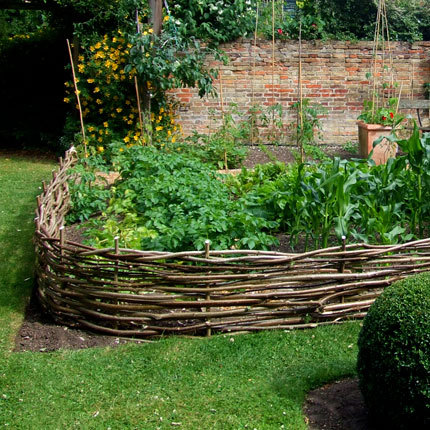
Wattle raised beds

Rubber tire gardens

Hugelkultur

An herb spiral
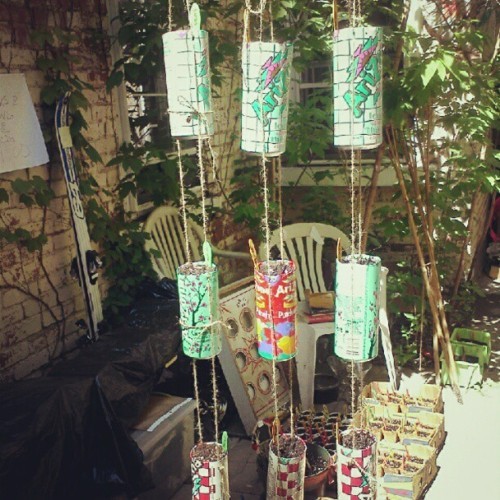
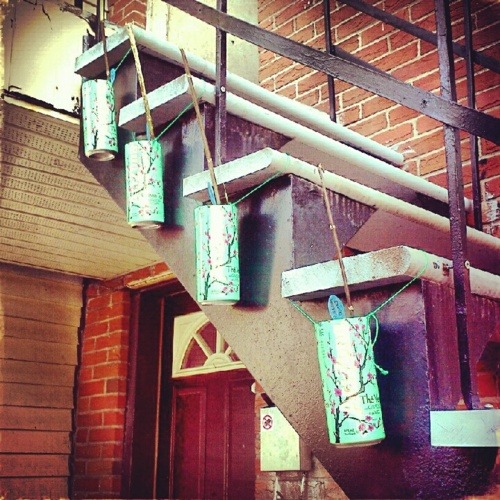
Hanging gardens in cans (2)
Trellises and supports
Many plants need external support, such as stakes of trellises, to thrive.
Rebar can almost always be salvaged cheaply or free and makes a great trellis, arch, or purgola
Build trellises and supports out of the pliable young stems of plants like willow
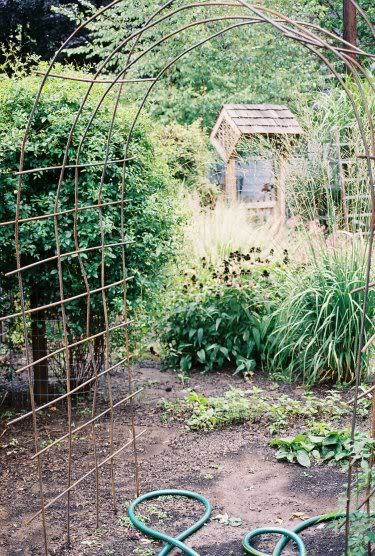
Rebar trellis/arch

Living willow arch/trellis
Paving
Paving often requires a foundation of sand or another stable and well-drained substrate, and a covering of stones, bricks, or other weatherproof elements. Slowly collect stones over time, or free paving stone fragments to create a mosaic-type walkway. Often people give these things away on craigslist. I made a patio and fireplace out of free salvaged bricks, for example.

Salvaged garden walkway
Greenhouses and cold frames
Here is a gallery of greenhouses made out of salvaged windows and doors
A cold frame is easy to make with salvaged lumber, and plastic sheeting.
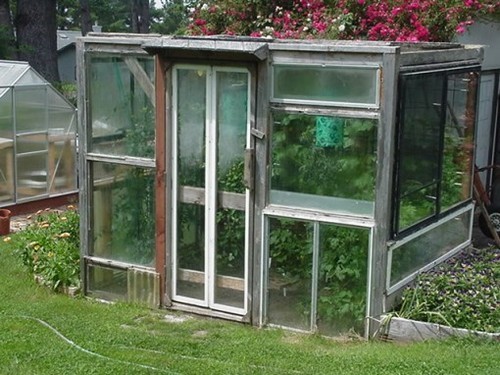
Window greenhouse
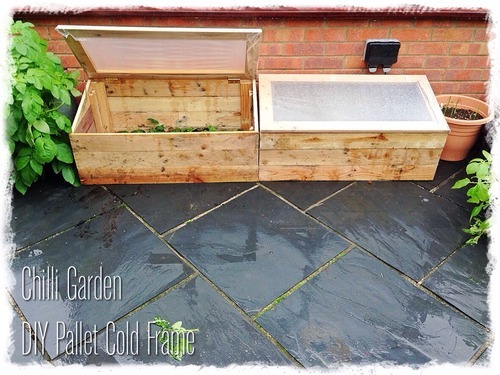
Palet cold-frame
Seeds and plants
Swap seeds with other gardeners
If you see a plant you like at someone’s house, ask for seeds or cuttings
Save seeds every year and build a library of options. Here is a great guide to seed saving.
Save seeds from foods you like from the grocery store: consider growing peanuts, ginger, garlic, peppers, or a walnut tree: all of these and more can be planted from store-bought produce.
Learn to take cuttings. There is a tonne of info on the web about basic cutting propagation, layering, (like I do with rhododendrons) air layering, and numerous other techniques to take clones of plants you like. This saves going to a nursery and shelling out big bucks for all the variety you want.
For cuttings, willow tea and honey are great rooting hormones/antiseptics/anti-fungal agents, which can save you $40 if you were thinking of buying commercial rooting hormone.
You can root cuttings in a potato! (See my methods for rooting “borrowed” plants here)
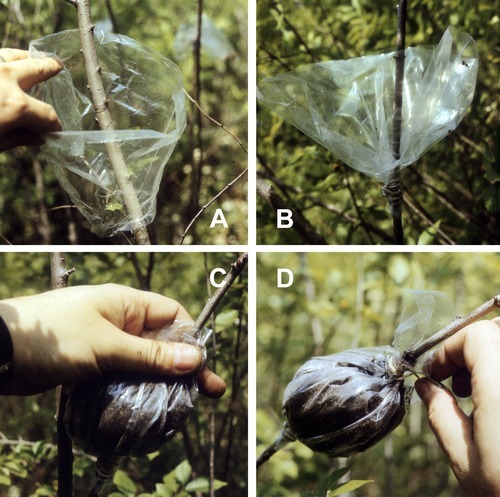
Air layering
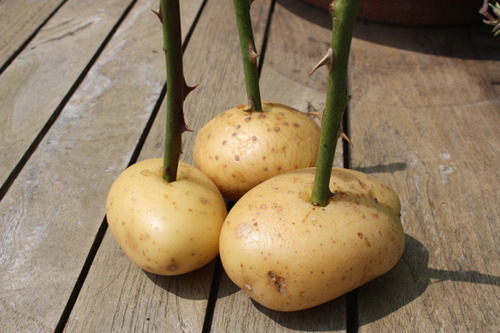
Rooting cuttings in potatoes
—-
I hope this helps you build your garden outside of the usual capitalist channels! It can be a cheap or free hobby if you are willing to think outside the box, and maybe put up with things that don’t look as clean or crisp as a hardware store catalogue. If you have any further ideas, please add them! The more information the better.
Not to be a decolonialist marxist but the concept of emotionality and compassion being incompatible, the opposite, and unmixable with intelligence is very fucking white. :/


Hi, I’m a homeless inventor. After I get a home I will be working on this!!!
Keep reading
no, listen, when I say I want to integrate more specific solarpunk stuff in my life, i don’t mean to ask for yet again new “aesthetic” clothes that now you have to buy or make to show your support of the movement (screw that i’m consuming enough as it is), or more posts about impossible house goals, or whatever, I’m asking you what my options to build a portable and eco friendly phone charger are, im asking you viable tiny-appartment edible plants growing tricks on a budget, im asking tips to slow down when my mind and society tell me im not fast enough, i don’t need more rich art nouveau amateurs aesthetics or pristine but cold venus project, okay, i know i should joins associations where I am tho i’m constantly on the move, thanks for that, just, you know, can we get a bit more practical ??? how do I hack my temporary flat into going off the grid for the time i’m here

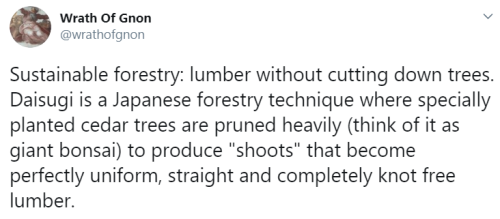
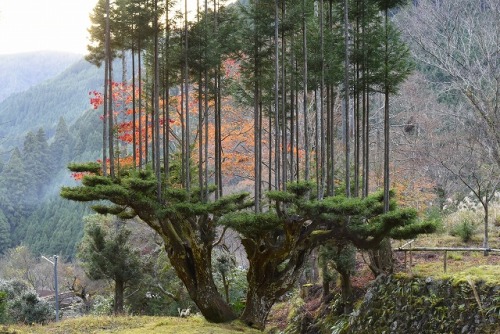


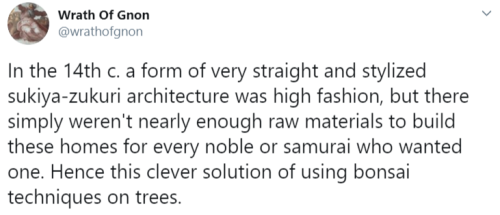



-
 mimicori reblogged this · 1 month ago
mimicori reblogged this · 1 month ago -
 fortunes-haven reblogged this · 3 months ago
fortunes-haven reblogged this · 3 months ago -
 yenoodlethings reblogged this · 3 months ago
yenoodlethings reblogged this · 3 months ago -
 princesstokyom reblogged this · 4 months ago
princesstokyom reblogged this · 4 months ago -
 acrushonesmeralda reblogged this · 4 months ago
acrushonesmeralda reblogged this · 4 months ago -
 stevishabitat reblogged this · 5 months ago
stevishabitat reblogged this · 5 months ago -
 fite-me-dio liked this · 5 months ago
fite-me-dio liked this · 5 months ago -
 zapp-branigan reblogged this · 5 months ago
zapp-branigan reblogged this · 5 months ago -
 zapp-branigan liked this · 5 months ago
zapp-branigan liked this · 5 months ago -
 aufcat liked this · 5 months ago
aufcat liked this · 5 months ago -
 lapislantern reblogged this · 5 months ago
lapislantern reblogged this · 5 months ago -
 lapislantern liked this · 5 months ago
lapislantern liked this · 5 months ago -
 fellwar-finch reblogged this · 5 months ago
fellwar-finch reblogged this · 5 months ago -
 fellwar-finch liked this · 5 months ago
fellwar-finch liked this · 5 months ago -
 tefltwins reblogged this · 5 months ago
tefltwins reblogged this · 5 months ago -
 tall-might liked this · 5 months ago
tall-might liked this · 5 months ago -
 tiny-werebear reblogged this · 5 months ago
tiny-werebear reblogged this · 5 months ago -
 tiny-werebear liked this · 5 months ago
tiny-werebear liked this · 5 months ago -
 heart809 reblogged this · 5 months ago
heart809 reblogged this · 5 months ago -
 heart809 liked this · 5 months ago
heart809 liked this · 5 months ago -
 corvidsarecool reblogged this · 5 months ago
corvidsarecool reblogged this · 5 months ago -
 pandakahn reblogged this · 5 months ago
pandakahn reblogged this · 5 months ago -
 pandakahn liked this · 5 months ago
pandakahn liked this · 5 months ago -
 muddindapuddin liked this · 5 months ago
muddindapuddin liked this · 5 months ago -
 soyest-boy reblogged this · 5 months ago
soyest-boy reblogged this · 5 months ago -
 chiefmuffinmuncher reblogged this · 5 months ago
chiefmuffinmuncher reblogged this · 5 months ago -
 wolvesinstarryskies reblogged this · 5 months ago
wolvesinstarryskies reblogged this · 5 months ago -
 wolvesinstarryskies liked this · 5 months ago
wolvesinstarryskies liked this · 5 months ago -
 breadmeleon reblogged this · 5 months ago
breadmeleon reblogged this · 5 months ago -
 princesstokyom liked this · 5 months ago
princesstokyom liked this · 5 months ago -
 serotoninswitch reblogged this · 5 months ago
serotoninswitch reblogged this · 5 months ago -
 serotoninswitch liked this · 5 months ago
serotoninswitch liked this · 5 months ago -
 curlsabroad reblogged this · 5 months ago
curlsabroad reblogged this · 5 months ago -
 onservantswings liked this · 5 months ago
onservantswings liked this · 5 months ago -
 ii-do-what-i-want reblogged this · 5 months ago
ii-do-what-i-want reblogged this · 5 months ago -
 slyandthefamilybook liked this · 5 months ago
slyandthefamilybook liked this · 5 months ago -
 freakqueer reblogged this · 5 months ago
freakqueer reblogged this · 5 months ago -
 weathernerdmando reblogged this · 5 months ago
weathernerdmando reblogged this · 5 months ago -
 weathernerdmando liked this · 5 months ago
weathernerdmando liked this · 5 months ago -
 boreal-sea liked this · 5 months ago
boreal-sea liked this · 5 months ago -
 boreal-sea reblogged this · 5 months ago
boreal-sea reblogged this · 5 months ago -
 cameoappearance liked this · 5 months ago
cameoappearance liked this · 5 months ago -
 bisexual-nightmare reblogged this · 5 months ago
bisexual-nightmare reblogged this · 5 months ago -
 bisexual-nightmare liked this · 5 months ago
bisexual-nightmare liked this · 5 months ago -
 mitzvahmelting liked this · 5 months ago
mitzvahmelting liked this · 5 months ago -
 fortunes-haven liked this · 5 months ago
fortunes-haven liked this · 5 months ago -
 sakon76 reblogged this · 5 months ago
sakon76 reblogged this · 5 months ago -
 sakon76 liked this · 5 months ago
sakon76 liked this · 5 months ago -
 marithlizard reblogged this · 5 months ago
marithlizard reblogged this · 5 months ago